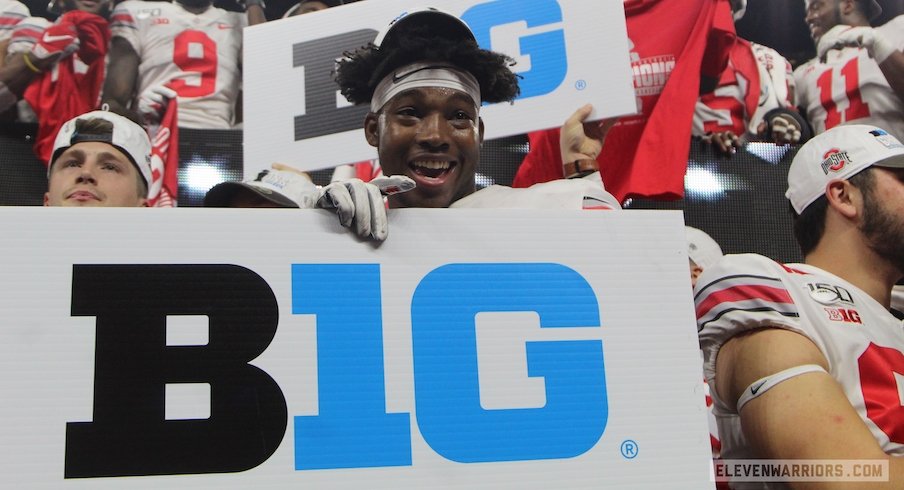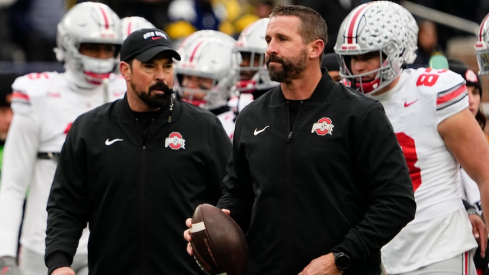When the Big Ten, ACC and Pac-12 announced an alliance in August, the expectation was that they would work together to schedule annual non-conference football games between schools from the three conferences.
Not even six months later, those plans have already been abandoned.
During a press conference at the Woody Hayes Athletic Center on Wednesday, Ohio State athletic director Gene Smith said the three conferences have not had any recent conversations about scheduling more games against each other. Instead, Smith expects the Big Ten to continue with its current model of nine conference games and three non-conference games with schools having the freedom to schedule games against schools from any conference.
“When we first started the alliance, everything was a little bit about scheduling. And that kind of shifted a little bit,” Smith said. “We moved away from that pretty quickly, because many of us felt nine was still right for us in our scheduling model. And we felt that conference contests, when you look at it across the board, conference contests from a TV partner point of view were just as valuable. And so we decided to kind of walk away from that a little bit.”
From Ohio State’s perspective, Smith doesn’t think OSU would benefit from playing games against the ACC and Pac-12 every year. That would likely restrict Ohio State’s ability to schedule home-and-home series against marquee opponents from other conferences, such as Notre Dame, Texas, Alabama and Georgia, all of whom Ohio State is scheduled to play in the next decade.
“That's the reason right there,” Smith said. “I'm still willing to listen to eight (conference games instead of nine), but even if we go eight, I'm not so sure we're gonna mess around and schedule, we're gonna carry the load for the conferences and schedule Pac-12 and ACC schools. Because we're gonna play whoever it is. And it might be a Pac-12 or ACC school. It might be like Washington's on our schedule down the road. But I don't see us making any changes that way. Those games are huge. It's like Notre Dame. What is this, the sixth time we've played Notre Dame in a regular season? It's the coolest thing. So yeah, I don’t see us making that change.”
While Smith’s preference is for the Big Ten to continue playing nine conference games – and he indicated that’s what the Big Ten’s TV partners want as well – he is open to the possibility of the Big Ten abandoning divisions. That would mean the teams with the two best records in the entire conference would both make the Big Ten Championship Game, rather than just one team from each division, while it would also likely mean playing every team in the conference at least twice every four years, which Smith likes because it would give players the opportunity to go to every Big Ten stadium over the course of a four-year career.
“I personally don't have a preference. I'm okay with losing the divisions. Although I’d like to go back to Legends and Leaders – I'm just kidding – but I'm okay with losing divisions,” Smith said. “But I'm interested in seeing the models first. One of the things I want to make sure we do is try and mitigate some of the issues. One of the issues that has been challenging for a number of our schools is student-athletes can go through four years and never play at a certain place. So I want to see if there's a way to fix that. I don't know that, I'm not the schedulers for those things. And so we got to protect our rivalries. Obviously we got to do that. So in the new models, where there's no divisions, what does that look like?”
Smith said there have not been any conversations about shuffling the divisions, so he expects that the Big Ten will either maintain its current East and West divisional structure or eliminate divisions entirely. He expects a final decision on divisions and whether the Big Ten will continue to play nine conference games to be made during league meetings in May.


